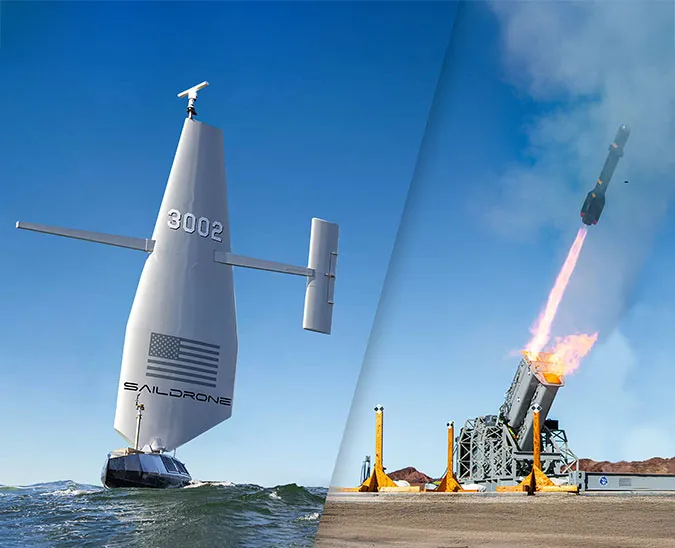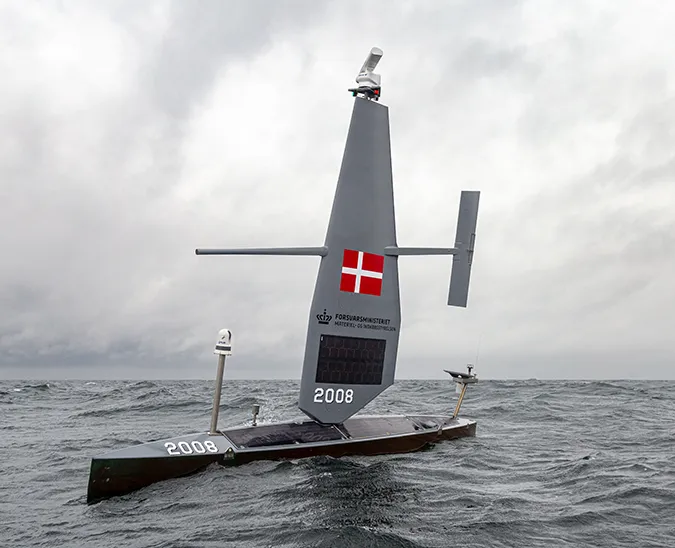Published on
Author
Two Saildrone unmanned surface vehicles (USVs) launched from Bergen, Norway, on April 24, 2019, on a four-month mission to study the temporal-spatial dynamic of fish aggregations and school formations of several key species in the North Sea. The 2019 Sandeel and Saithe Mission is Saildrone’s first European mission, in partnership with Havforskningsinstituttet, Norway's Institute of Marine Research (IMR).
The USVs will be equipped with Saildrone’s standard suite of science sensors to capture meteorological and oceanographic data above and below the sea surface including a Simrad EK80 scientific wideband echo sounder.
“The use of saildrones as a platform for the echo sounder and other sensors will provide observations of the marine ecosystem over time and space without a large impact of the observed animals. I hope to observe and learn how fish schools are distributed in real life situations,” explained Espen Johnsen, IMR chief acoustician and principal investigator.

Sandeel is a small, semi-pelagic, eel-like fish that plays an important role in North Atlantic food webs. There are several types of sandeel; the species to be observed in this mission is the lesser sandeel (Ammodytes marinus), which once made up the largest fishery in the North Sea with annual landings exceeding one million tons at its peak in 1998. The fish is used by humans primarily for fish oil and meal, and it also provides nourishment to a variety of fish, seabirds, and marine mammals within the North Sea ecosystem.
The lesser sandeel is a very peculiar fish: It spends much of its life burrowed in the sand on the sea floor—during the winter and at night during spring and summer. Its feeding season spans April to June when sandeel emerge from the sand and form large schools to search for zooplankton. There is evidence to suggest that climate changes in the North Sea, specifically warmer water temperatures, are impacting the population dynamics of zooplankton and therefore sandeel, as well as species further up the food chain (Jensen and Christensen, 2008).

North Sea saithe (Pollachius virens) is one of Norway’s most significant fisheries, though less so than the cod, herring, and mackerel fisheries. Also referred to as coalfish or pollock, saithe can grow to more than one meter (three feet) long and weigh up to 20 kilograms (44 pounds). Saithe often migrate long distances and can live up to 30 years.
“I have some expectation that the data recorded by the saildrones will reveal insight into ecosystem dynamics that we so far have not been able to observe,” said Johnsen.
The saildrones will also perform acoustic surveys of other species, including North Sea herring (Clupea harengus) and zooplankton, to investigate the potential use of saildrones as a platform for future studies, and rendezvous with the RV Kristine Bonnevie and to conduct comparison studies.

“Saildrone is thrilled that Norway’s premier marine science agency, IMR, will use our technology for a multitude of science objectives. This mission will lead the way for the use of saildrone USVs as part of ocean observations in Europe and globally,” said Elizabeth Douglas, leader of International Partnerships at Saildrone. “Our hope is that the data from the saildrones’ echo sounder, oceanographic, and atmospheric sensors will prove useful in IMR’s ongoing investigations regarding the impacts of climate variability in the North Sea marine ecosystem.”
The 2019 IMR Sandeel and Saithe Mission is expected to serve as a proof of concept to demonstrate the capabilities of the Saildrone USV platform to conduct long-term observations for multi-year missions across a variety of survey types in the North Sea and the Arctic Ocean.
Read more: Her slippes seildronene som skal erstatte forskningsfartøyer.
Main photo: Two Saildrone unmanned surface vehicles (USVs) launched from Bergen, Norway, on April 24, 2019. Erlend A. Lorentzen/Institute of Marine Research.





